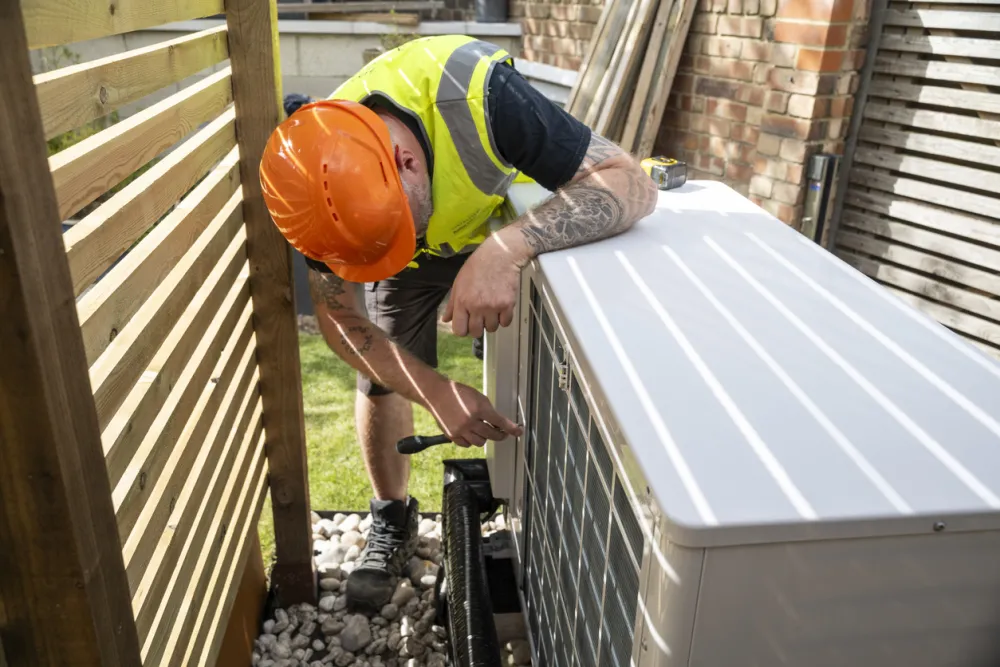Canada is gearing up to launch nation-building projects that jumpstart economic development and affirm Canadian sovereignty. But as we recently shared in our op-ed, expediting approvals for a handful of traditional infrastructure projects doesn’t build us a new Canada. Building retrofits are a strategic, nation-building initiative that solve multiple problems and deliver long-term community benefits — such as safer, more affordable homes and high-quality local jobs — while also creating opportunities to develop export markets for Canadian expertise and products. And we now have an opportunity to redesign retrofit initiatives that truly empower homeowners and contractors by leveraging loans, financing tools and crowding in private capital.
Building retrofits are smart, strategic nation-building
Prime Minister Mark Carney has mandated the federal Cabinet to support Canadian economic development by “bringing down costs for Canadians […] making housing more affordable […] and creating new careers in the skilled trades.”
We see residential building retrofits as a nation-building opportunity — exactly the kind of project the Cabinet has been tasked with prioritizing. A Canada-wide renovation wave focused on deep retrofitting our building stock will save Canadians money on heating and cooling their homes, can make housing more affordable, and will create up to 200,000 high quality jobs across the country. Ramping up retrofits now, and over the next 20 years, could generate more than $48 billion in annual economic development and pay for themselves twice over through increased tax revenue. Investments in energy efficiency and demand-side energy solutions — like rooftop solar, battery storage, or shifting energy use to lower-use times — create long-term, local jobs.
Scaling deep retrofits for long-term community building
Retrofits are also an investment to protect and strengthen Canadian communities. In an age of extreme weather becoming more severe and frequent, retrofits can make homes more resistant to heatwaves, wildfire smoke, flooding, and other extreme weather events; Canadian research has shown that every proactive dollar invested in climate adaptation saves $13 and $15 in the long term on avoided damage and disruption.
By scaling with purpose, valuing the benefits from reduced energy waste, improved health and safety, and local economic development, Canada can lead the world in sustainable building innovation.
Leveraging our leadership and technologies to build export markets
This moment also presents an opportunity for Canada to become a global leader and innovator in the retrofit sector. Retrofits support a globally competitive sector in high performance building construction and retrofit technologies and expertise. This approach directly aligns with the federal government’s nation-building criteria for purpose-driven, long-term solutions aligned with the national interest. Prioritizing trade diversification through retrofit technologies and expertise could enhance national security and clean economic growth.
Time to rethink retrofits
This is a key moment to make retrofit initiatives work better for Canadians while also lowering costs, making housing more affordable, and growing skilled trades careers. Most of the buildings Canadians live and work in today will still be standing in 2050. These older homes are often more affordable but increasingly costly to heat and cool, and unprepared for severe weather. Any national housing strategy — like Build Canada Homes — must prioritize retrofitting existing buildings to protect vulnerable residents, reduce emissions and preserve housing stock.
Canada already has initiatives in place that can be leveraged to advance retrofits. The Canada Greener Homes Grant incentivized half a million Canadians to apply for the $5,000 grants over three years. The program was a great success — supporting over 75,000 jobs and saving households $386 annually on energy bills — but it shut down in 2024 as funding began to run out.
The Canada Greener Homes Loan program recently received additional funding — but it will stop accepting applications on October 1, 2025. In a time of growing economic uncertainty, many homeowners still see taking on new debt as a risk they’d rather avoid. And as Efficiency Canada has pointed out, the time delay in getting home retrofit financing doesn’t match the urgency of a sudden furnace breakdown in the middle of the winter. Special programs − like Canada Mortgage and Housing Corporation’s (CMHC) Canada Greener Affordable Housing − should be recapitalized (at a minimum doubling the funding) and improve on comprehensive, whole-building upgrades for older, low-rise social housing, especially multi-unit residential buildings (MURBs) from the 1950s to 1970s.
Other financing options, like Property Assessed Clean Energy Programs (PACE), have done the heavy lifting to build capacity in the building retrofit sector while making retrofitting more financially feasible and should continue. Going forward, all orders of government should coordinate financing tools — such as PACE funding through FCM's Green Municipal Fund, on-bill financing, and tools like Clean Building Tax Credits — while also backing projects financially and engaging institutions on models that attract investors aiming to decarbonize and reduce risk.
All across the country, organizations like the Alberta Ecotrust Retrofit Accelerator have been working hard to transform the market for retrofits through education, research, and analysis to make retrofits easier and more attainable. This work has only been possible through dedicated funding from Natural Resources Canada’s Deep Retrofit Accelerator Initiative. This highlights the importance of federal involvement and action to develop and support the retrofit market. Yet the funding sunsets in 2027 — to fully precipitate the Deep Retrofit Accelerator Initiative’s potential, the program needs a longer runway so the participants can attain higher and more achievements. Loan and financing tools should be established to ensure that buildings connected to concierge services have access to capital for implementation.
Programs like these have been valuable supports to develop the retrofit sector but it is time to leverage their learnings to reach the pace and scale needed now. To protect the Canadian economy, to build up a stronger nation for all Canada, we need to focus on making our buildings healthier, safer, and more affordable to heat and cool.
As the federal government moves to advance nation-building projects, they should pay attention to the remarkable societal benefits of retrofitting and re-commit, adjust, and scale up the retrofit initiatives they’ve already been running.
This article was updated on September 18, 2025 to reflect that the Canada Greener Homes Loan Program will stop accepting applications on Oct 1, 2025.
The Pembina Institute acknowledges the generous support of the Alberta Ecotrust Foundation.













